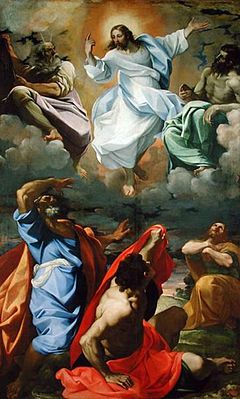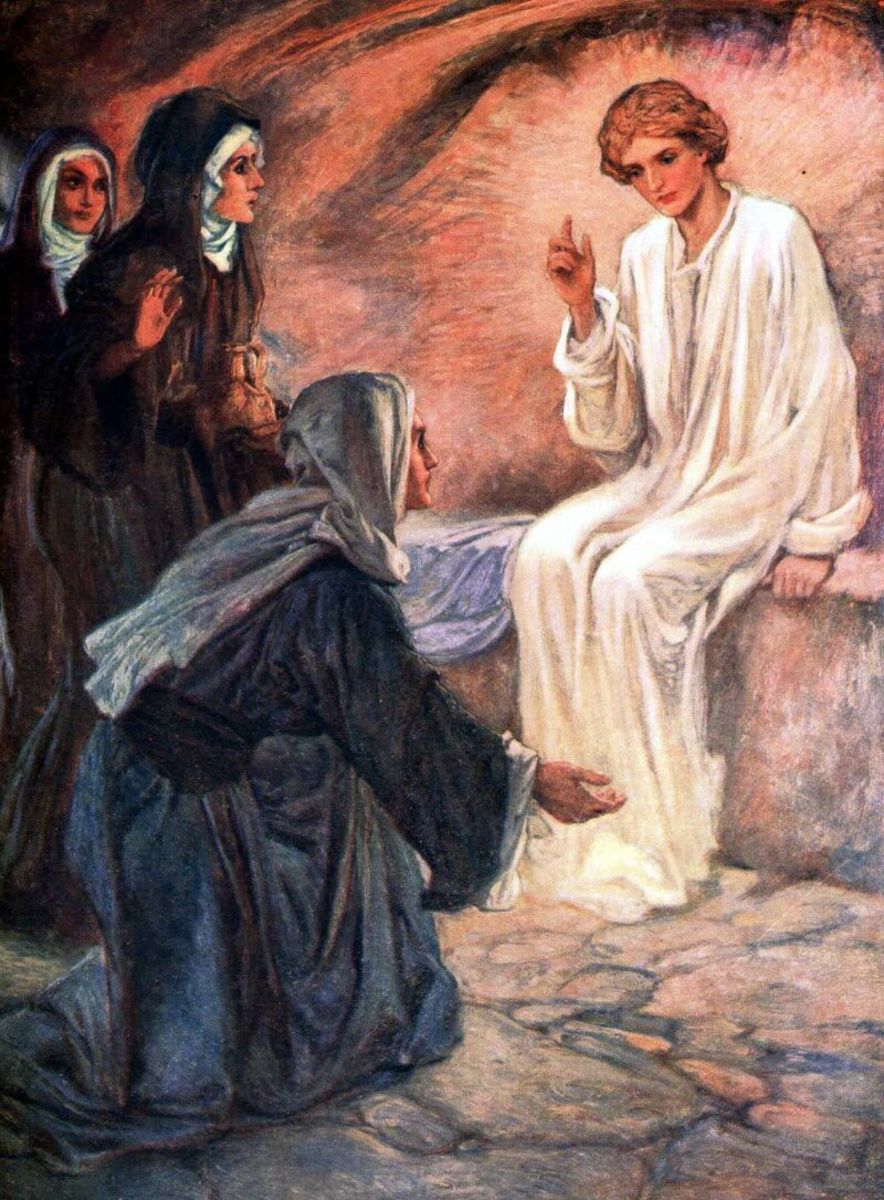Bible: What Does Mark 9 Teach Us About the Transfiguration of Jesus Christ?
The Transfiguration of Jesus Christ

Companions of Jesus
view quiz statisticsThe Coming of the Kingdom
Regarding Jesus’ transfiguration—the preview of the “coming” of the kingdom that some of His disciples (the “inner core” of Peter, James and John) would see before death (vv. 1-2)—Mark focuses on the brilliant appearance of the Savior’s clothes rather than on the glory of His person.
Apparently, Peter (Mark’s source) could not look at Jesus’ face; instead, he labored to represent what did strike him, rather humorously describing Christ’s garments in no fewer than three ways (“shining, exceedingly white, like snow, such as no launderer on earth can whiten them”) [v. 3].
Not knowing what to say about the appearance of Elijah and Moses on the mountain does not stop Peter from running off at the mouth—a fact that he always made sure Mark recorded (v. 6).
Peter’s amanuensis also reveals the apostles’ secret reasoning about the term “rising from the dead”—something Matthew cannot do (v. 10).
[It is surprising that they should not know what the phrase meant.
Surely, they must have been aware of the doctrine of the resurrection.
Ryrie suggests that the subject concerned Christ’s resurrection, not resurrection in general (New Testament Study Bible, 83).]
Regarding the coming of Elijah before “the end,” Mark differs from Matthew in two small details: he inserts a prophecy about the mistreatment of the Son of Man before he mentions the Jews’ abuse of “Elijah.”
He also omits the apostles’ recognition that “Elijah” was John; otherwise, his commentary is essentially the same (vv. 11-13).
See Matthew 17:11-12 for more in-depth coverage.
Diseases and Demons
Do demons cause all diseases, including epilepsy?
Jesus Heals the Epileptic Boy
Mark deals far more extensively with the healing of the epileptic boy than does Matthew (sixteen verses as opposed to eight); the differences appear as follows:
First, he indicates that the disciples disputed with certain scribes over their inability to cure the boy; Matthew mentions no such opposition (v. 14).
Second, Mark reports that “a great multitude” that had gathered around the disciples ran to Jesus, “greatly amazed” (v. 15).
[A great multitude? What amazed them? Just seeing a celebrity in their midst?]
Third, he records that Jesus questioned the scribes about this “discussion” (v. 16).
Fourth, Mark singles out an individual—“one of the crowd” —whose son is the epileptic, and makes him expand upon the latter’s condition (vv. 17-18); he does not indicate that the man kneeled down and pleaded with the Lord, as does Matthew 17:14-15.
[Since Jesus addressed the scribes, was this “one of the crowd” a scribe, or simply an individual from “the great multitude”?]
Fifth, Mark describes the boy’s demonically caused epileptic fit (v. 20), and chronicles Jesus’ dialogue with the father (vv. 21-24).
[Several points of interest:
(1) Why does Jesus ask how long the boy has been an epileptic?;
(2) Matthew indicates that the man offered the information about the fire and water as soon as he met Christ, not at this point (cf. 17:15);
(3) Jesus rebukes the father for his unbelief (“If you can do anything, . . . . If you can!” [vv. 22-23]), and the latter asks for His help (v. 24).]
Sixth, after Christ casts out the spirit, the witnesses think the boy is dead (vv. 25-26).
Mark omits one segment in his presentation that Matthew includes: viz., the lesson about mustard seed faith (vv. 28-29; cf. Matt. 17:19-20).
[Again, details between gospels can differ, but no contradiction exists.
The Spirit enables one writer to recall certain scenes that He does not desire another evangelist to record.]
The Death and Resurrection of the Lord Jesus


In his gospel, Matthew discusses Jesus’ second prediction of His death and resurrection, as well as His instruction about servanthood being the path to greatness (cf. 17:22-23; 18:1-5).
Whereas Matthew records the disciples’ asking Jesus, “Who is the greatest in the kingdom?” (18:1), Mark indicates that they remained silent when the Lord asked them what they were discussing rather heatedly among themselves, viz., who would be the greatest (vv. 33-34).
An apparent non sequitir follows.
The apostle John answers Jesus, but what he says does not pertain to the subject of the previous context.
He addresses Him as Teacher—not as Lord (as one might expect)—, and informs Him that they forbid an exorcist from casting out demons in Jesus’ name merely because he was not following them (v. 38).
Correcting the apostles’ judgment, Christ allows the freelancer to operate without restriction, knowing that the man would be “on our side” if he were not already (vv. 39-40).
God will not neglect to reward the smallest good deed performed in Jesus’ name (v. 41).
Self-Mutilation to Avoid Hell?
Does Jesus teach self-mutilation here?
"Where Their Worm Does Not Die"
Verses 42-48 include a thrice-repeated refrain: “where their worm does not die, and the fire is not quenched.”
Ryrie points out, though, that “many manuscripts do not contain verses 44 and 46, which are identical to verse 48” (New Testament Study Bible, 85).
Mark ties this section to the one dealing with the little child (cf. vv. 36-37), stressing how one should deal with offending body parts (hand, v. 43; foot, v. 45; eye, v. 47).
Jesus says, “everyone will be seasoned with fire, and every sacrifice will be seasoned with salt” (v. 49).
[The Critical Text omits the latter clause.]
The particle gar indicates a connection with previous verses that discuss drastic measures taken to keep one from hell.
Jesus, however, may simply mean that hellfire will not consume those who enter that place, because “salt” will preserve them just as salt preserves food.
On the other hand, those who belong to God ought to allow this “preservative” to affect their relationships with each other for the good (v. 50).
© 2014 glynch1






